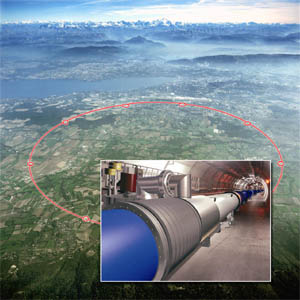
Welcome to the Club of Amsterdam Journal.

Happy Holidays and a rich 2011!
…. and join us next year at the event about the future of Financial Infrastructure – Thursday, 20 January!
Felix Bopp, editor-in-chief
Powering Europe: wind energy and the electricity grids
A report by the European Wind Energy Association

In order to achieve EU renewable energy and CO2 emission reduction targets, significant amounts of wind energy need to be integrated into Europe’s electricity system. This report will analyse the technical, economic and regulatory issues that need to be addressed in order to do so through a review of the available literature, and examine how Europe can move towards a more secure energy future through increased wind power production.
The report’s main conclusions are that the capacity of the European power systems to absorb significant amounts of wind power is determined more by economics and regulatory frameworks than by technical or practical constraints. Larger scale penetration of wind power faces barriers not because of the wind’s variability, but because of inadequate infrastructure and interconnection coupled with electricity markets where competition is neither effective nor fair, with new technologies threatening traditional ways of thinking and doing. Already today, it is generally considered that wind energy can meet up to 20% of electricity demand on a large electricity network without posing any serious technical or practical problems.
When wind power penetration levels are low, grid operation will not be affected to any significant extent. Today wind power supplies more than 5% of overall EU electricity demand, but there are large regional and national differences. The control methods and backup available for dealing with variable demand and supply that are already in place are more than adequate for dealing with wind power supplying up to 20% of electricity demand, depending on the specific system and geographical distribution. For higher penetration levels, changes may be needed in power systems and the way they are operated to accommodate more wind energy.
Experience with wind power in areas of Spain, Denmark, and Germany that have large amounts of wind energy in the system, shows that the question as to whether there is a potential upper limit for renewable penetration into the existing grids will be an economic and regulatory issue, rather than a technical one. For those areas of Europe where wind power development is still in its initial stages, many lessons can be learned from countries with growing experience, as outlined in this report. However, it is important that stakeholders, policy makers and regulators in emerging markets realise that the issues that TSOs in Spain, Denmark and Germany are faced with will not become a problem for them until much larger amounts of wind power are connected to their national grids.
The issues related to wind power and grid integration mentioned in this report are based on a detailed overview of best practices, past experiences, descriptions and references to technical and economic assessments. The report collects and presents detailed facts and results, published in specialised literature, as well as contributions from experts and actors in the sector. The aim is to provide a useful framework for the current debates on integrating wind power into the grid.
[…]
Conclusions
The modelling analysis backs up the theory that increased wind power capacities will reduce power prices in the future European power market system.
It has been estimated that if wind power capacity increases by 200 GW in 2020 (reaching a total of 265 GW), this would give a merit order effect of €10.8/MWh, reducing the average wholesale power price level from €85.8/MWh to €75/MWh.
However, this figure assumes a fully functioning market. It also includes the long-term investments forecast and is therefore based on the long-term market equilibrium. Simulated generation volumes in 2020 require economic feasibility with regards to long run marginal costs. Wind capacity replaces the least cost efficient conventional capacities so that the system is in equilibrium. This shift in the technology mix is the main reason for the observed merit order effect.
In reality this might not always happen. Power market bids are based on short run marginal costs, plants that are not cost efficient might be needed in extreme situations, for example when there is a lot of wind power on the system. The short-term effects of wind power are mostly related to the variability of wind power. The responding price volatility due to increased wind power stresses the cost efficiency of wind power generation. And in the real world, this would lead to a smaller merit order effect than analysed in the future optimal market equilibrium.
Consequently, the results of the study have to be considered carefully, especially considering the assumed future capacity mix, which includes a lot of uncertainties. Moreover, results should not be directly compared to recent literature, which usually estimate the short-term price effects of wind power. Here the market is not always in equilibrium and actual price differences and the merit order effect might therefore be very different.
Moreover, the study estimates the volume merit order effect referring to the total savings brought about due to wind power penetration during a particular year. Assuming that the entire power demand is purchased at the marginal cost of production, the overall volume of the MOE has been calculated at €41.7 billion/year. But this should not be seen as a purely socio-economic benefit. A certain volume of this is redistributed from producer to consumer because decreased prices mean less income for power producers. Currently, only the long-term marginal generation which is replaced by wind has a real economic benefit, and this should be contrasted to the public support for extended wind power generation.
The scenarios were developed so that the modelling analysis could show the effect of the additional wind capacities on future power prices. For this reason, the main difference between the two scenarios is the amount of wind capacity. All other renewable sources and capacities have been kept at 2008 levels in both scenarios. Hence, there is no future capacity increase assumed for bio-energy, solar or geothermal energy resources. This, however, does not reflect a very realistic market development. A higher renewable share would influence the abatement costs to reach the defined CO2 emissions cap. Indirectly, this would also influence investment decisions in conventional fossil based technologies, especially in the Reference scenarios. However, it is difficult to estimate the outcome on the merit order effect. Lower emission levels and hence lower carbon prices might also lead to coal power becoming more cost-efficient. This might counteract the effect of renewables on emissions. It is therefore recommended that these impacts be studied in a more thorough sensitivity analysis with the help of a quantifying modelling tool.
The sensitivity analysis resulted in an increase of the merit order effect by €1.9 /MWh when fossil fuel prices (gas, coal and oil) are increased by 25%. In the High fuel price case, wind power makes the power price drop from €87.7/MWh in the Reference scenario to €75/MWh in the Wind scenario. Comparing the resulting merit order effect in the High fuel case of €12.7/MWh to the Base case results of €10.8/MWh,the 25% higher fuel price case gives a merit order effect that is 17.5% higher.
The study showed that fuel prices have a major influence on power prices and marginal cost levels. The merit order effect has been mostly explained by the difference in the technology capacity and generation mix in the various scenarios, especially the differences in the development and utilisation of coal and gas power technologies. Investigating fuel price differences is therefore highly relevant. However, even stronger impacts on the merit order effect might be observed by changing the relative price differences of gas and coal price levels.
The study proved that carbon market assumptions and especially the resulting carbon price level will be a very important variable for the future power market and its price levels. Regarding the sensitivity of the assumed GHG emissions reduction target, the analysis illustrated higher equilibrium prices for the 30% reduction case than for the 20% reduction base case.
However, the results of the sensitivity analysis do very much depend on the assumptions for future abatement potential and costs in all EU ETS sectors, as well as in the industrial sectors.
Download the full report as *.pdf
Next Event

the future of Financial Infrastructure
What influence will the crises have on financial services and products?
Thursday, January 20, 2011
Registration: 18:30-19:00, Conference: 19:00-21:15
Location:Deloitte, Orlyplein 10, 1043 DP Amsterdam
The speakers and topics are
Maarten Mol, COO, Commercial & Merchant Banking, ABN AMRO
Earning TrustBouke de Vries, Senior Economist, Economic Research Department, Rabobank Nederland
Strengths of the cooperative model – a more effective value proposition for clients?Dave Rietveld, Manager Innovation, Equens
Transparency of financial settlement – rethinking the value proposition of institutionsHans Hintzen, Hintzen Legal Services
The Ratio of Leverage
Moderated by John Grüter, Owner, Digital Knowledge
Hatsune Miku – pop star as a 3-D hologram

Japan’s newest singing sensation is a… Hologram.
Hatsune Miku is a singing synthesizer application and its female character, developed by Crypton Future Media. It uses Yamaha Corporation’s Vocaloid synthesizing technology. The name of the character comes from a fusion of the Japanese for first, sound and future sounds like a nanori reading of future, normally read as “mirai”, referring to her position as the first of Crypton’s “Character Vocal Series”. Her voice is sampled from Japanese voice actress Saki Fujita. Hatsune Miku has performed onstage in what appears to be a dynamic hologram.
Vocaloid is a singing synthesizer application, with its signal processing part developed through a joint research project between the Pompeu Fabra University in Spain and the Yamaha Corporation, who backed the developement financially – and later developed the software into the commerical product “Vocaloid”. The software enables users to synthesize singing by typing in lyrics and melody. It uses synthesizing technology with specially recorded vocals of voice actors or singers. To create a song, the user must input the melody and lyrics. A piano roll type interface is used to input the melody and the lyrics can be entered on each note. The software can change the stress of the pronunciations, add effects such as vibrato, or change the dynamics and tone of the voice. Each Vocaloid is sold as “a singer in a box” designed to act as a replacement for an actual singer. The software is available in English and Japanese, although a Chinese version was produced for Sonika.
Hatsune Miku was released on August 31st, 2007. And since then, there have been more than 30,000 songs and movies about Hatsune Miku were posted in a popular Video sharing web site such as YouTube and Nico-Nico-Douga (Japan).
.
February 4: Visiting CERN

The Club of Amsterdam organises a visit to CERN in Geneva, Switzerland.
Date: Friday, February 4, 2011. 12:00 – 17:00
FULLY BOOKED!
Club of Amsterdam blog

Club of Amsterdam blog
http://clubofamsterdam.blogspot.com
November 30: The happy organisation – a deontological theory of happiness
November 26: Utilitarianism for a broken future.
October 6: The Girl
October 6: Life
October 6: The Bird
October 6: Deep Diving
October 6: Shadows
October 6: Darkness
October 6: An Execution
June 16: Leadership
News about the Future

The European Environment – State and Outlook 2010
SOER 2010 provides a set of assessments of the current state of Europe’s environment, its likely future state, what is being done and what could be done to improve it, how global megatrends might affect future trends… and more.
Environmental policy in the European Union and its neighbours has delivered substantial improvements to the state of the environment. However, major environmental challenges remain which will have significant consequences for Europe if left unaddressed.

Grow Food Year Round With Hydroponics
Windowfarms are vertical, hydroponic, modular, low-energy, high-yield edible window gardens built using low-impact or recycled local materials.
The Windowfarms Project operates in what seems a small niche, but the team hopes it might be what Buckminster Fuller would call a “trim tab,” a small part that turns giant ships by being particularly well placed. Growing some portion of one’s own food is a simple pleasure that can make a big difference in one’s relationship with nature. As we choose nutrients to feed plants we hope to eat in turn, we gain experience with a nearly-lost fundamental human art, get a microcosmic view of the food system, develop a stake in the conversation, and come up with new ideas for how to take care of ourselves and our planet in troubled times.
Tokyo Graffiti Bar

Graffiti offers customers an “Artistic” experience unlike anything seen in any club in the world. With seven 46” and seven 32” interactive large LCD screens built as tables, and set into the 5.3 meter bar, we are the world’s first Resto-Lounge club with such a large media entertainment installation.

Customers can draw their own graffiti on the Tables, browse food and drink menus, interact with their waiters, play games, and enjoy media content provided by Graffiti. Keep yourself entertained at your table with interactive special effects, including virtual champagne bubbles and lightning bolts, and many other effects which react to touch and objects placed on your table.

Recommended Book

Engage: The Complete Guide for Brands and Businesses to Build, Cultivate, and Measure Success in the New Web
By Brian Solis
Social media has democratized influence, forever changing the way businesses communicate with customers and the way customers affect the decisions of their peers. With platforms like Twitter, YouTube, and Facebook, anyone can now find and connect with others who share similar interests, challenges, and beliefs-creating communities that shape and steer the perception of brands. Without engagement in these communities, we miss major opportunities to shape our marketing messages.
However, use of the tools does not guarantee that people will listen. Engagement is shaped by the interpretation of its intentions. In order for social media to mutually benefit you and your customers, you must engage them in meaningful and advantageous conversations, empowering them as true participants in your marketing and service efforts.
With Engage! as your guide, you can effectively compete in this new era of digital Darwinism while engendering the support of online champions. Social and participatory media significantly contribute to the success of every modern business, and with this book, you will find out how to:
- Create a space in the online ecosystem that truly represents your business and cultivates your customers’ loyalty and trust
- Participate in the unique culture of each available social media platform to engage your customers
- Establish an organizational structure that constantly targets the next new media trend
- Attract online champions and change agents who will uncover the social networks you need to reach and the influencers who will help build your reputation in the networked world
- Consistently adapt your company to market needs and trends based on the invaluable connections you forge and the empathy and insight you garner in the process
There are thousands of customers waiting to hear from you about your business and vision. It’s the minimum ante to create a vibrant and loyal online community. When you engage, you will build an authoritative social network that increases your visibility, relevance, influence, and profitability. It’s time to Engage!
Learning Robots
Robots playing Ping-Pong
Robot Learning Lab Department for Empirical Inference & Machine Learning (AG Schoelkopf)
Max Planck Institute for Biological Cybernetics
Our research centers around the goal of bringing advanced motor skills to robotics using techniques from machine learning and optimal control. Please check out our research or contact any of our lab members.
Creating autonomous robots that can learn to assist humans in situations of daily life is a fascinating challenge for machine learning. While this aim has been a long-standing vision of artificial intelligence and the cognitive sciences, we have yet to achieve the first step of creating robots that can learn to accomplish many different tasks triggered by environmental context or higher-level instruction. The goal of our robot learning laboratory is the investigation of the ingredients for such a general approach to motor skill learning, to get closer towards human-like performance in robotics. We thus focus on the solution of basic problems in robotics while developing domain- appropriate machine-learning methods.
Bionic Learning Network
Inspired by nature: Festo pursues its “Biomechatronic Footprint” – biological principles providing a new impetus for technical and industrial applications – in cooperation with renowned universities, institutes and development companies.
From human muscle to flight simulator
The principle of tensing and relaxing muscles has been used for several practical applications – e.g. for the Airmotion_ride simulator, where pneumatic muscles ensure flowing movements.
From fish fin to gripper
Under pressure, fins bulge out in the direction of the applied force. The Fin Ray Effect uses this principle in applications such as the Bionic Tripod and the FinGripper.
Webcast – the future of Happiness

the future of Happiness
November 25, 2010
View the webcast & presentations

or go directly to the webcast:
Ruut Veenhoven Greater happiness for a greater number – Is that possible?
Nic Marks The Happy Planet
Futurist Portrait: Don Tapscott

Don Tapscott, one of the world’s leading authorities on business strategy, is Chairman of nGenera Insight. He was founder and chairman of the international think tank New Paradigm before its acquisition by nGenera.
Don is an internationally sought writer, consultant and speaker on business strategy and organizational transformation. He has given more than 400 keynotes speeches and presentations over the past five years. His clients include top executives of many of the world’s largest corporations and government leaders from many countries. The Washington Technology Report called him one of the most influential media authorities since Marshall McLuhan.
Don is the author of thirteen widely read books about information technology in business and society, with his fourteenth book Macrowikinomics: Rebooting Business and the World, co-authored by Anthony D. Williams, due to be released in September 2010. Macrowikinomics is the follow up to Wikinomics: How Mass Collaboration Changes Everything (2006) co-authored by Anthony D. Williams. Wikinomics was an international bestseller, #1 on the 2007 management book charts, and on The New York Times and BusinessWeek bestseller lists. Translated into 20 languages, Wikinomics was a finalist for the prestigious Financial Times/Goldman Sachs Best Business Book Award and was chosen as one of the best books of the year by a number of publications, including The Economist.
Don’s other well-known books include: Paradigm Shift: The New Promise of Information Technology (1992); The Digital Economy: Promise and Peril in the Age of Networked Intelligence (1995); Growing Up Digital (1998); Digital Capital: Harnessing the Power of Business Webs (2000); The Naked Corporation: How the Age of Transparency Will Revolutionize Business (2003) and Grown Up Digital (2008).
Don is a frequent writer for the Huffington Post, The Wall Street Journal, New York Times, Forbes, Business 2.0, The Financial Times, USA Today, and BusinessWeek, and has been interviewed and quoted widely in the broadcast media including CNN, NBC, CBS, NPR, and the BBC.
Don is Adjunct Professor of Management, Joseph L. Rotman School of Management, University of Toronto. He holds a B.Sc. in Psychology and Statistics, an M.Ed. specializing in Research Methodology, and three Doctor of Laws (Hon) granted from the University of Alberta in 2001, Trent University in 2006 and McMaster University in 2010. He is involved extensively in the transformation of education, working with many universities, school boards and Educational Secretaries and Ministers around the world. He is also working with government leaders around the world to reinvent government for the digital era and strengthen democratic institutions. He is a Fellow of the World Economic Forum.
Deeply committed to the issue of mental health, Mr. Tapscott is a former member of the Board of Trustees at the Clarke Institute of Psychiatry and was Chair of the Centered on Hope Campaign for the Center for Addiction and Mental Health Foundation. He is a founding member and a member of the committee of Advisers of the Business & Economic Roundtable on Addiction & Mental Health. He and his wife, Ana P. Lopes, are the benefactors of the Tapscott Chair in Schizophrenia Studies at the University of Toronto. He was Chair of the 1999-2001 Trent University Beyond Our Walls Capital Fundraising Campaign.
Agenda
Season Program 2010/2011 | ||
| January 20, 2011 18:30-21:15 | the future of Financial Infrastructure What influence will the crises have on financial services and products? Location:Deloitte, Orlyplein 10, 1043 DP Amsterdamutrtr  | |
| February 17, 2011 18:30-21:15 | the future of Services Location: Info.nl, Sint Antoniesbreestraat 16, 1011 HB Amsterdam | |
| March 17, 2011 18:30-21:15 | the future of Shell Location: Shell Technology Centre Amsterdam, Grasweg 31, 1031 HW Amsterdam | |
| April 14, 2011 18:30-21:15 | the future of the Human Mind | |
| May 19, 2011 18:30-21:15 | the future of the Singularity | |
| June 23, 2011 18:30-21:15 | the future of European Democracy | |
 |






Customer Reviews
Thanks for submitting your comment!